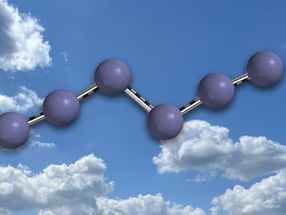Most powerful dual-comb spectrometer developed
System paves the way for many applications
Scientists from Hamburg and Munich developed the world's most powerful dual-comb spectrometer that paves the way for many applications in atmospheric science and biomedical diagnostics, such as early cancer detection. The work has recently been published in Nature Communications.

Two trains of laser pulses with slightly different spacing originate from a thin-disk laser gain medium in the center of the picture. The work was recently published in Nature Communications.
Eric Schambroom
The core part of the system is a special type of laser-gain medium, a thin-disk, and a unique configuration of the mirrors surrounding this medium, a laser resonator (shown in the illustration). "The key of our dual comb laser source lies in its simplicity", team leader Oleg Pronin explains. "Instead of using two separate lasers, actively stabilizing and locking them to each other, our two laser outputs originate from the same laser resonator, leading to an excellent intrinsic mutual stability." The dual-output laser yields one order of magnitude higher power than ever before. This paves the way for many applications in atmospheric science and biomedical diagnostics, such as early cancer detection. Fundamental research applications such as precise measurements of the atomic lines in uncovered spectral ranges and nuclear clocks, the most precise clocks in our universe, come into reach thanks to this novel spectrometer.
The dual-comb spectrometer converts extremely fast electric field oscillations (10¹⁵ oscillations per second) of light into radiofrequency range (10⁶ oscillations per second), where the signal can be detected in real-time with modern electronics. The process is realized with two trains of laser pulses with slightly different spacing. It offers high sensitivity and resolution with fast acquisition times in the millisecond time scale. Megawatt level peak powers pave the way toward high-resolution spectroscopy in the deep ultraviolet frequency range via frequency conversion – a spectral domain yet poorly covered in today's spectrometers. Compared to complex, actively stabilized laser systems, the compact size facilitates real-world applications, such as atmospheric sensing and high-precision distance measurements.
Original publication
Original publication
Topics
Organizations
Other news from the department science
These products might interest you
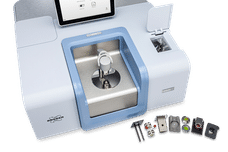
INVENIO by Bruker
FT-IR spectrometer of the future: INVENIO
Freely upgradeable and configurable FT-IR spectrometer

Microspectrometer by Hamamatsu Photonics
Ultra-compact microspectrometer for versatile applications
Precise Raman, UV/VIS and NIR measurements in portable devices
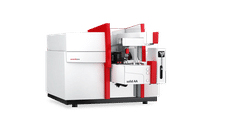
ZEEnit by Analytik Jena
Zeeman Technology for Maximum Sensitivity – Matching any Analytical Problem
Transverse-heated graphite furnace for optimum atomization conditions and high sample throughput

contrAA 800 by Analytik Jena
contrAA 800 Series – Atomic Absorption. Redefined
The best of classical atomic absorption and ICP-OES spectrometry are combined in the contrAA 800
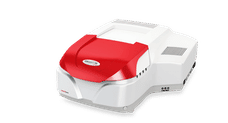
SPECORD PLUS by Analytik Jena
SPECORD PLUS Series - Maximum precision in UV/Vis
The modern classic guarantees the highest quality
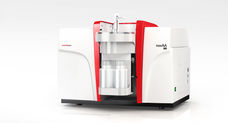
novAA® 800 by Analytik Jena
The Analyzer 4 You - novAA 800-Series
The reliable all-rounder, making routine analysis efficient and cost-effective
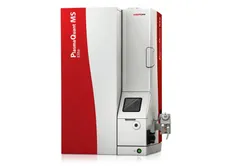
PlasmaQuant MS Elite by Analytik Jena
LC-ICP-MS Is the Key to the World of Elemental Species
Highest Sensitivity and Lowest Detection Limits with PlasmaQuant MS Series and PQ LC
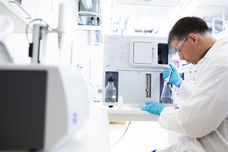
Biacore catalogue by Cytiva
Get started with Surface Plasmon Resonance interaction analysis - which system is right for you?
Discover simpler and faster Surface Plasmon Resonance (SPR) with Biacore systems
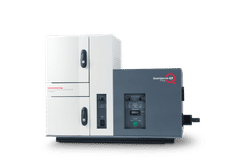
Quantaurus-QY by Hamamatsu Photonics
High-speed UV/NIR photoluminescence spectrometer
Precise quantum yield measurements in milliseconds without reference standards
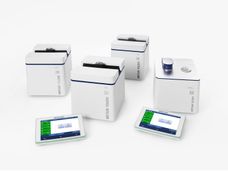
FastTrack™ by Mettler-Toledo
FastTrack UV/VIS Spectroscopy - Speed Up Your Measurements
Fast, reliable & efficient measurements with traceable accuracy in a small footprint

Get the analytics and lab tech industry in your inbox
By submitting this form you agree that LUMITOS AG will send you the newsletter(s) selected above by email. Your data will not be passed on to third parties. Your data will be stored and processed in accordance with our data protection regulations. LUMITOS may contact you by email for the purpose of advertising or market and opinion surveys. You can revoke your consent at any time without giving reasons to LUMITOS AG, Ernst-Augustin-Str. 2, 12489 Berlin, Germany or by e-mail at revoke@lumitos.com with effect for the future. In addition, each email contains a link to unsubscribe from the corresponding newsletter.
Most read news
More news from our other portals
See the theme worlds for related content
Topic World Spectroscopy
Investigation with spectroscopy gives us unique insights into the composition and structure of materials. From UV-Vis spectroscopy to infrared and Raman spectroscopy to fluorescence and atomic absorption spectroscopy, spectroscopy offers us a wide range of analytical techniques to precisely characterize substances. Immerse yourself in the fascinating world of spectroscopy!

Topic World Spectroscopy
Investigation with spectroscopy gives us unique insights into the composition and structure of materials. From UV-Vis spectroscopy to infrared and Raman spectroscopy to fluorescence and atomic absorption spectroscopy, spectroscopy offers us a wide range of analytical techniques to precisely characterize substances. Immerse yourself in the fascinating world of spectroscopy!
Topic world Diagnostics
Diagnostics is at the heart of modern medicine and forms a crucial interface between research and patient care in the biotech and pharmaceutical industries. It not only enables early detection and monitoring of disease, but also plays a central role in individualized medicine by enabling targeted therapies based on an individual's genetic and molecular signature.

Topic world Diagnostics
Diagnostics is at the heart of modern medicine and forms a crucial interface between research and patient care in the biotech and pharmaceutical industries. It not only enables early detection and monitoring of disease, but also plays a central role in individualized medicine by enabling targeted therapies based on an individual's genetic and molecular signature.





























